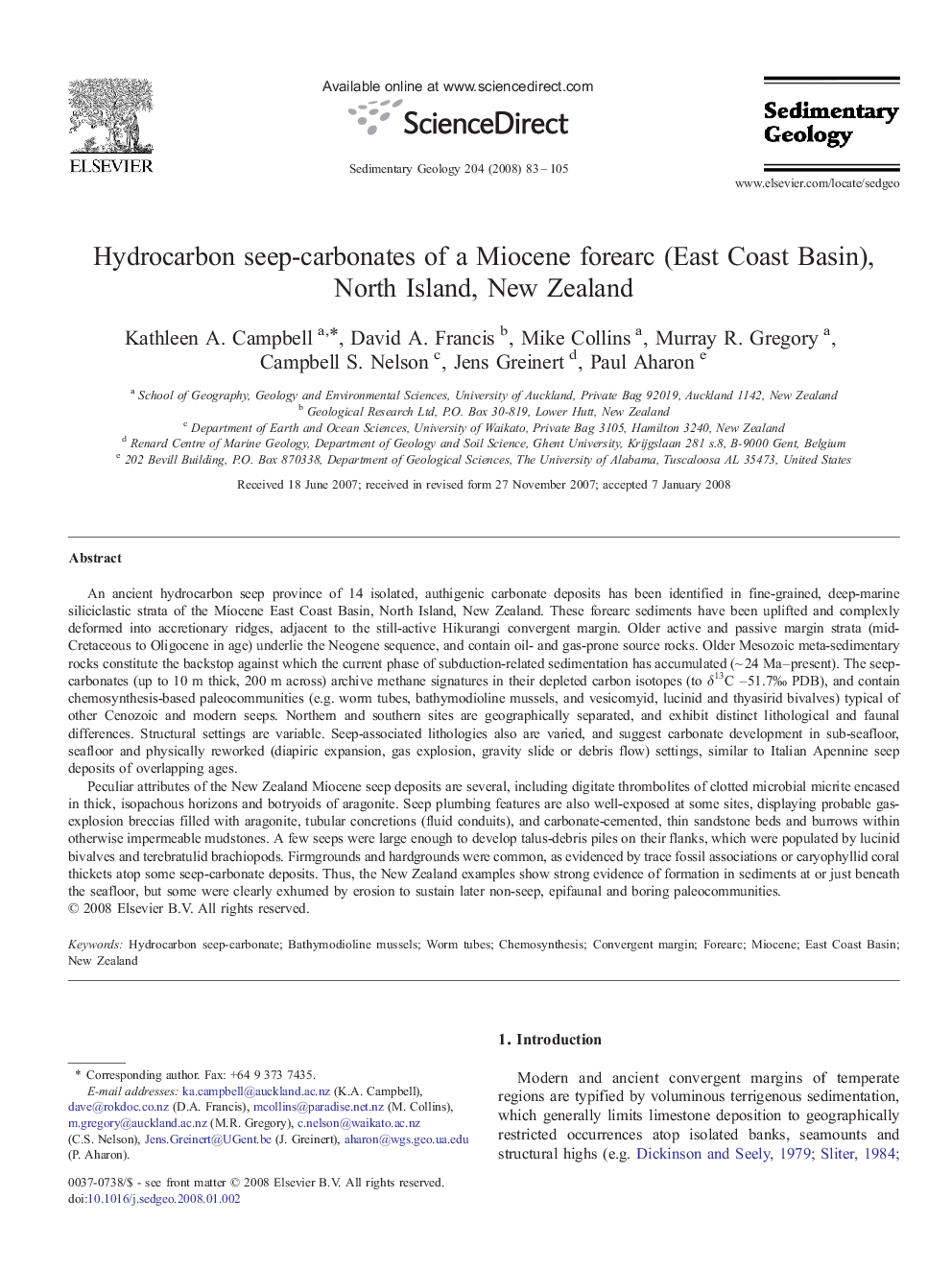| کد مقاله | کد نشریه | سال انتشار | مقاله انگلیسی | نسخه تمام متن |
|---|---|---|---|---|
| 4690670 | 1636158 | 2008 | 23 صفحه PDF | دانلود رایگان |

An ancient hydrocarbon seep province of 14 isolated, authigenic carbonate deposits has been identified in fine-grained, deep-marine siliciclastic strata of the Miocene East Coast Basin, North Island, New Zealand. These forearc sediments have been uplifted and complexly deformed into accretionary ridges, adjacent to the still-active Hikurangi convergent margin. Older active and passive margin strata (mid-Cretaceous to Oligocene in age) underlie the Neogene sequence, and contain oil- and gas-prone source rocks. Older Mesozoic meta-sedimentary rocks constitute the backstop against which the current phase of subduction-related sedimentation has accumulated (~ 24 Ma–present). The seep-carbonates (up to 10 m thick, 200 m across) archive methane signatures in their depleted carbon isotopes (to δ13C –51.7‰ PDB), and contain chemosynthesis-based paleocommunities (e.g. worm tubes, bathymodioline mussels, and vesicomyid, lucinid and thyasirid bivalves) typical of other Cenozoic and modern seeps. Northern and southern sites are geographically separated, and exhibit distinct lithological and faunal differences. Structural settings are variable. Seep-associated lithologies also are varied, and suggest carbonate development in sub-seafloor, seafloor and physically reworked (diapiric expansion, gas explosion, gravity slide or debris flow) settings, similar to Italian Apennine seep deposits of overlapping ages.Peculiar attributes of the New Zealand Miocene seep deposits are several, including digitate thrombolites of clotted microbial micrite encased in thick, isopachous horizons and botryoids of aragonite. Seep plumbing features are also well-exposed at some sites, displaying probable gas-explosion breccias filled with aragonite, tubular concretions (fluid conduits), and carbonate-cemented, thin sandstone beds and burrows within otherwise impermeable mudstones. A few seeps were large enough to develop talus-debris piles on their flanks, which were populated by lucinid bivalves and terebratulid brachiopods. Firmgrounds and hardgrounds were common, as evidenced by trace fossil associations or caryophyllid coral thickets atop some seep-carbonate deposits. Thus, the New Zealand examples show strong evidence of formation in sediments at or just beneath the seafloor, but some were clearly exhumed by erosion to sustain later non-seep, epifaunal and boring paleocommunities.
Journal: Sedimentary Geology - Volume 204, Issues 3–4, 20 February 2008, Pages 83–105